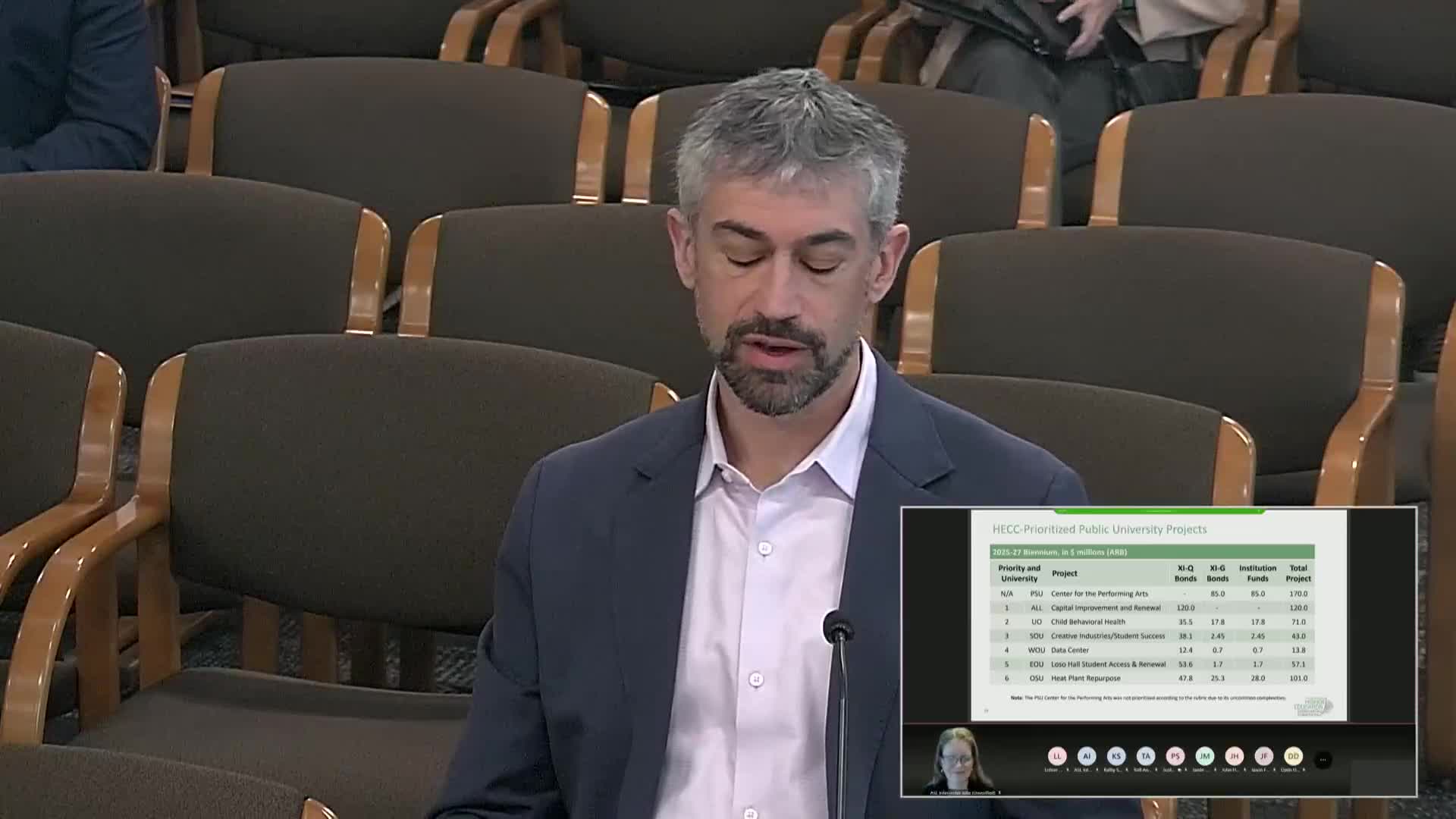Oregon public universities seek $120M for capital improvements and renewals
May 02, 2025 | Capital Construction, Ways and Means, Joint, Committees, Legislative, Oregon
This article was created by AI summarizing key points discussed. AI makes mistakes, so for full details and context, please refer to the video of the full meeting. Please report any errors so we can fix them. Report an error »

In a recent meeting of the Joint Committee on Ways and Means Subcommittee on Capital Construction, Oregon legislators discussed critical funding requests for the state's public universities, emphasizing the need for both renovation and new construction projects. The meeting highlighted the ongoing challenges faced by institutions like OSU Cascades, which has historically struggled to secure funding for new facilities despite significant state investments over the past decade.
The committee reviewed a strategic capital development plan that identified a lack of need for new university square footage statewide, yet acknowledged specific regional demands, particularly in Central Oregon. This nuanced understanding is crucial as it reflects the unique needs of different areas, suggesting that while overall growth may not be necessary, targeted investments are essential for institutions to thrive.
Jamie Moffitt, Senior Vice President for Finance Administration at the University of Oregon, presented data showing that universities are responsible for nearly half of the state's capital assets. She noted that many of these facilities are aging, with a significant portion over 30 years old, which poses maintenance challenges. The discussion underscored the importance of continued state investment in university infrastructure, not only for the benefit of students and faculty but also for the broader community engagement that these campuses facilitate.
The committee also examined the Capital Improvement and Renewal (CINR) fund, which is vital for addressing deferred maintenance and ensuring that facilities remain safe and accessible. The universities are requesting $120 million in bonds for this fund, a figure that reflects a careful balance between maintaining existing structures and funding new projects that meet evolving academic needs.
Legislators expressed a desire for more detailed financial data, including the cost per student for facilities and maintenance, to better assess the efficiency of university spending. This request highlights the committee's commitment to transparency and accountability in the allocation of state resources.
As the meeting concluded, the committee acknowledged the significant economic impact of university projects, which not only enhance educational environments but also create jobs and stimulate local economies. The discussions set the stage for future funding decisions that will shape the landscape of higher education in Oregon, ensuring that institutions can continue to serve their communities effectively.
The committee reviewed a strategic capital development plan that identified a lack of need for new university square footage statewide, yet acknowledged specific regional demands, particularly in Central Oregon. This nuanced understanding is crucial as it reflects the unique needs of different areas, suggesting that while overall growth may not be necessary, targeted investments are essential for institutions to thrive.
Jamie Moffitt, Senior Vice President for Finance Administration at the University of Oregon, presented data showing that universities are responsible for nearly half of the state's capital assets. She noted that many of these facilities are aging, with a significant portion over 30 years old, which poses maintenance challenges. The discussion underscored the importance of continued state investment in university infrastructure, not only for the benefit of students and faculty but also for the broader community engagement that these campuses facilitate.
The committee also examined the Capital Improvement and Renewal (CINR) fund, which is vital for addressing deferred maintenance and ensuring that facilities remain safe and accessible. The universities are requesting $120 million in bonds for this fund, a figure that reflects a careful balance between maintaining existing structures and funding new projects that meet evolving academic needs.
Legislators expressed a desire for more detailed financial data, including the cost per student for facilities and maintenance, to better assess the efficiency of university spending. This request highlights the committee's commitment to transparency and accountability in the allocation of state resources.
As the meeting concluded, the committee acknowledged the significant economic impact of university projects, which not only enhance educational environments but also create jobs and stimulate local economies. The discussions set the stage for future funding decisions that will shape the landscape of higher education in Oregon, ensuring that institutions can continue to serve their communities effectively.
View full meeting
This article is based on a recent meeting—watch the full video and explore the complete transcript for deeper insights into the discussion.
View full meeting
